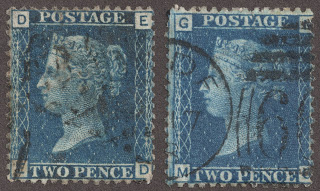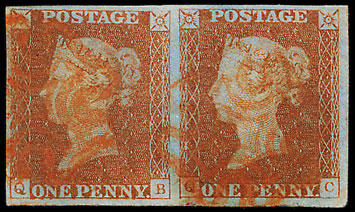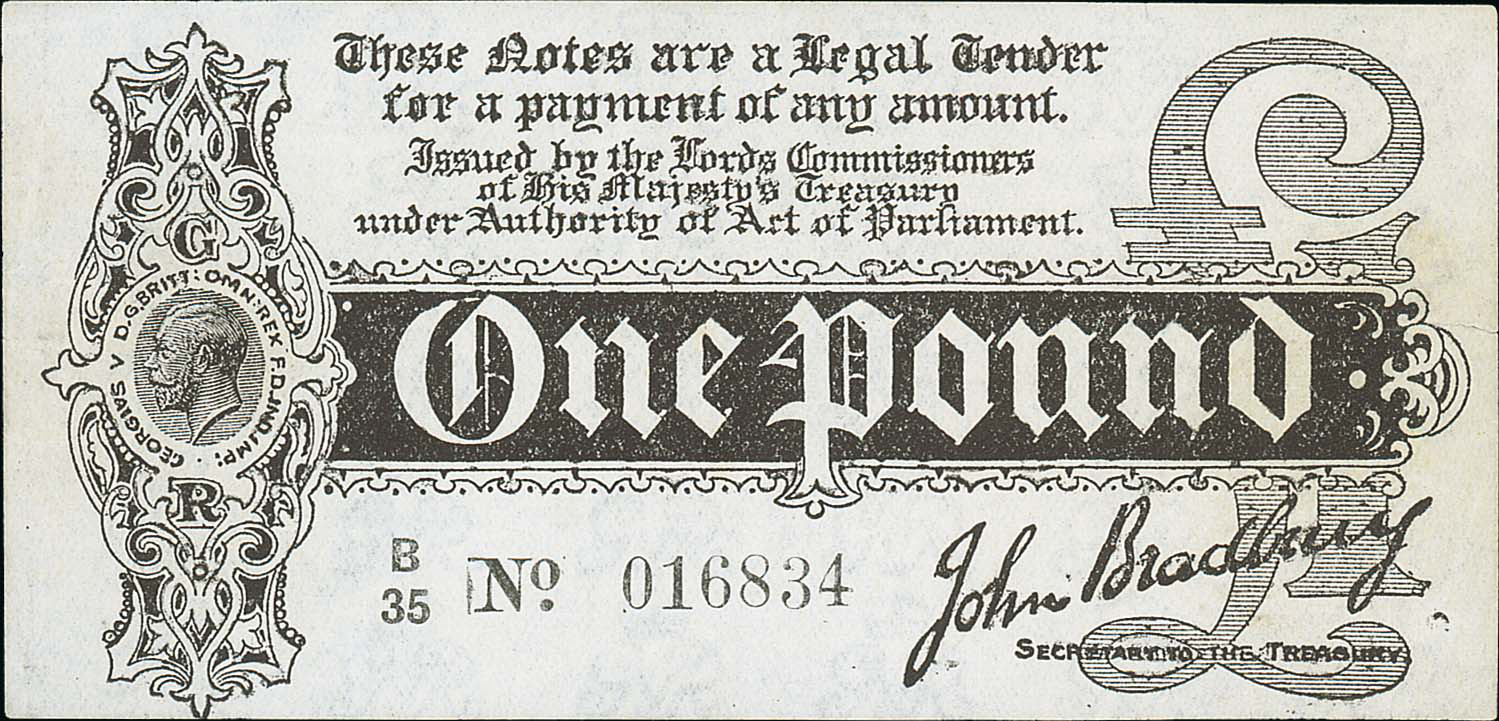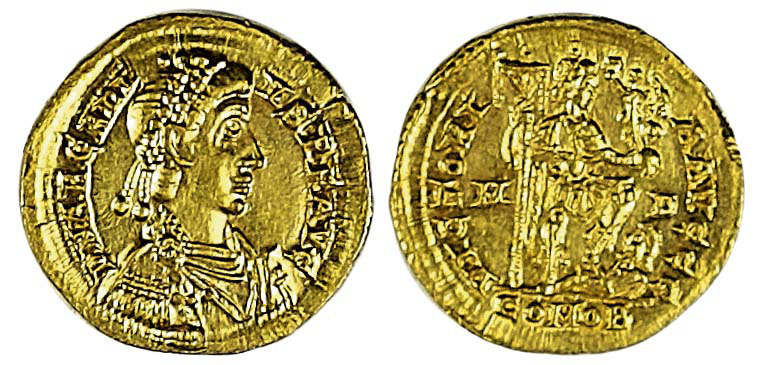With over 8 million British and Commonwealth men and women serving in World War One, and another 10 million proudly doing likewise in WW2, there are literally millions of British war medals in circulation.
In our experience, there are also millions of British War Medal and Victory Medal pairs held in collections or by relatives in this country and across the world.
Having auctioned thousands of medals since 1958, our valuation experts boast extensive knowledge about the most popular World War 1 and WW2 medals for sale and available to buy right now.
In this guide, we’ll aim to provide an overview of each one and explain the brief history behind their enduring appeal.
Should you own a medal which you want to sell or get accurately valued, email us or call 01926 499031 – our experts will be happy to help.
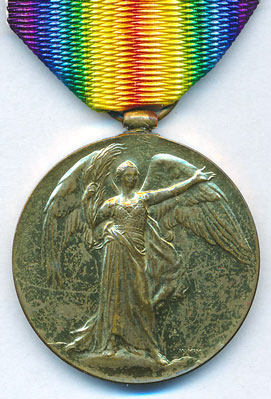
Celebrated World War 1 medals for sale in the UK
1914 STAR
Granted in 1917, this bronze four-pointed star campaign medal is often known as the Mons Star because it was awarded to all who served in France or Belgium from 5 August 1914 to midnight on 22-23 November 1914, marking the end of the First Battle of Ypres.
Those who were eligible included all Officers and men from the British and Indian Expeditionary Forces, including civilian medical practitioners, nursing sisters, nurses and anyone working in a military hospital. Members of the RM, RN, RNR or RNVR who served ashore also qualified, but not those who only served afloat.
An estimated 378,000 stars were awarded and recipients also received the British War Medal and Victory Medal – three medals which were sometimes referred to as Pip, Squeak and Wilfred.
1914-15 STAR
Approved in 1918, this Campaign Star was issued to officers and men from the British Empire forces who served in any theatre of war between 5 August 1914 and 31 December 1915 – except those who were eligible for the 1914 Star. Approximately 2,350,000 were issued.
This medal is identical to the 1914 Star in every way, except a centre scroll bearing the dates ‘1914-15’ and the omission of two small ‘Aug’ and ‘Nov’ scrolls.
It was never awarded singly and recipients were also handed the British War Medal and Victory Medal.
BRITISH WAR MEDAL
Approved for issue in 1919, this silver WW1 campaign medal honours those officers and men of the British and Imperial forces who served in some of the most terrible battles the world has ever known – including Ypres Salient and the Somme – from 5 August 1914 to 11 November 1918, and later extended to include service in Russia 1919-1920.
The medal was awarded if a person completed 28 days mobilised service in a qualifying theatre – even in the event of death on active service before the completion of this period.
In total, 6,390,000 silver medals were issued to the Royal Navy, Royal Marines, Dominion and Colonial naval forces including reserves. Approximately 110,000 bronze versions were issued to foreign labour corps personnel, including Chinese and Maltese recipients.
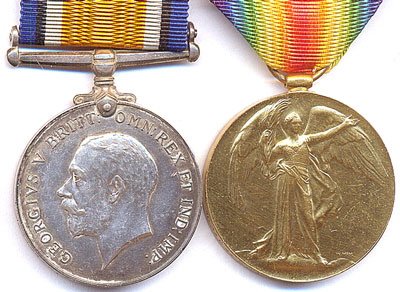
Awarded for service: A World War 1 British War Medal (left) and Victory Medal (right)
VICTORY MEDAL
This WW1 campaign medal was awarded to all British and Imperial forces who received the 1914 Star or 1914-15 Star. Often called the Inter Allied Victory Medal, it was also issued to those who received the British War Medal (with certain exceptions) and was never awarded alone.
Issued on 1 September 1919, women were also eligible if they’d served in the Women’s Royal Naval Service, Woman’s Army Auxiliary Corps, Women’s Royal Air Force, as a nurse, canteen staff or as a member of any charitable service, in a qualifying theatre.
To be eligible you must have been mobilized or served in any form of battle, including at sea, from midnight on 4-5 August 1914 and midnight on 11-12 November 1918. A total of 6,334,522 were estimated to have been awarded.
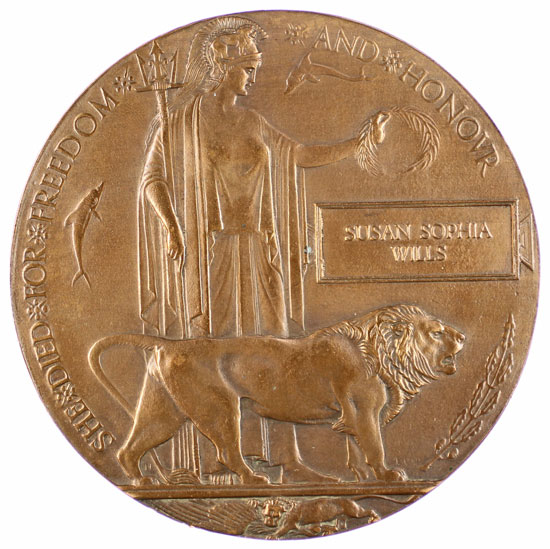
THE MEMORIAL PLAQUE OF WW1
Cast from bronze, the World War One Memorial Plaque (above) was commonly known as the Dead Man’s Penny, Death Penny, Death Plaque or Widow's Penny.
This is because it was issued to the next of kin of men and women who died in service in the war between 1914-20. Approximately 1,355,000 of the original 12cm memorial plaques were produced, bearing the name of the deceased in raised letters, with 600 awarded to women.
In December 2018, we successfully achieved a total of £9,300 (including buyer’s premium) for a rare World War 1 Memorial Plaque awarded to Susan Sophia Wills, who died of disease aged 36 while serving as G847 Greaser with Women’s Royal Navy Service attached to RAF Cattewater on 4 October 1918.
SILVER WAR BADGE
First issued in September 1916 and accompanied by an official certificate of entitlement, this badge was issued in the UK to service personnel who’d been honourably discharged from WW1 due to sickness or wounds.
Sometimes incorrectly known as the Silver Wound Badge, it was worn on the right breast when in civilian clothes.
The World War 1 medals issued from 1914 to 1918
- 1914 Star
- 1914-15 Star
- British War Medal
- Victory Medal
- Territorial Force War Medal - the scarcest of the WW1 medals
- Mercantile Marine War Medal
- The Memorial Plaque of WW1
- Silver War Badge
Well-known WW2 medals for sale right now!
In total, the British Government issued 11 campaign medals for participation in WW2 – the Defence Medal, the War Medal and nine campaign stars.
However, when it comes to the most popular WW2 medals for sale some are much more sought-after than others.
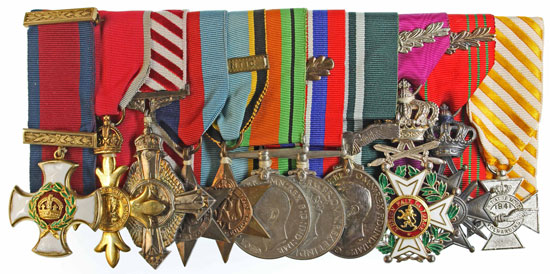
The full medal group awarded to Wing Commander Ernest Leonard Archer R.A.F.V.R. (from left): Distinguished Service Order, The Most Excellent Order of the British Empire Officer’s Breast Badge (OBE) (Civil), 1943 Air Force Cross, 1939-1945, Air Crew Europe (Atlantic bar) Stars, Defence Medal, BWM with MID oakleaf, KGVI IND IMP Air Efficiency Award, Belgian Order of Leopold Knight’s Brest badge with Palme (Mil), Belgian Croix de Guerre with Palme and Netherlands Silver Flying Cross.
DEFENCE MEDAL
The 1939-45 Defence Medal (fifth from left above) was awarded to British Commonwealth personnel for campaign service in non-operational areas which were subjected to attacks from the air or closely threatened, with various eligibility criteria depending on the location and specialist area of service.
Members of the Home Guard or any civilian services entitled to wear chevrons for their service were also eligible.
As long as they fulfilled the required conditions, those who were awarded campaign stars could also be awarded this medal.
1939-1945 WAR MEDAL
Awarded to all full-time personnel who completed 28 days service (operational and non-operational) between 3 September 1939 and 2 September 1945 no matter where they served or what section of the Armed Forces.
It was even given to eligible personnel from British and Commonwealth forces who saw their service cut short by death, wounding or capture.
Unless a War Medal has a unique or intriguing story behind it, they tend to realise a modest value when auctioned here at Warwick & Warwick.
1939-45 STAR
The six–pointed star of yellow copper zinc alloy was issued for six months’ operational service in the Second World War from 3 September 1939 to 2 September 1945.
Due to the risk they were exposed to on a daily basis, aircrew only required two months’ service. Fighter aircraft crew members who took part in the ‘Battle of Britain’ were also awarded a commemorative bar.
Recipients were still awarded this honour if their service period was terminated by death, wounding or capture.
The World War 2 medals issued for service 1939 to 1945
- Defence Medal
- 1939-1945 War Medal
- 1939-45 Star
- Atlantic star
- Arctic star (Issued retrospectively from 2013)
- Air crew Europe star
- Africa star
- Pacific star
- Burma star
- Italy star
- France and Germany star
Do you have a medal to value?
Take advantage of a free medal valuation, call 01926 499031 to arrange a personal appointment.
If you're keen to learn more, see our How much are my medals worth? guide now!

